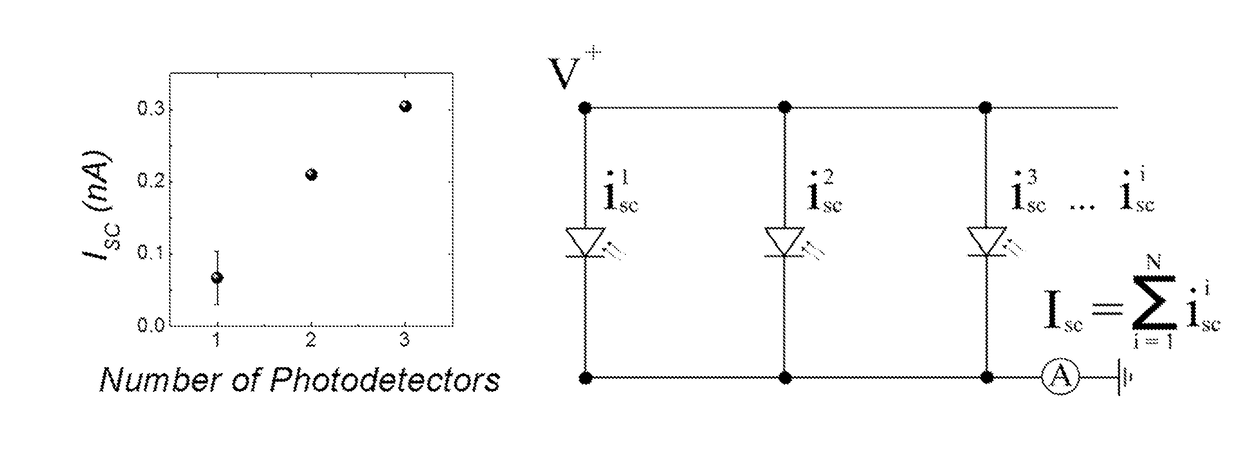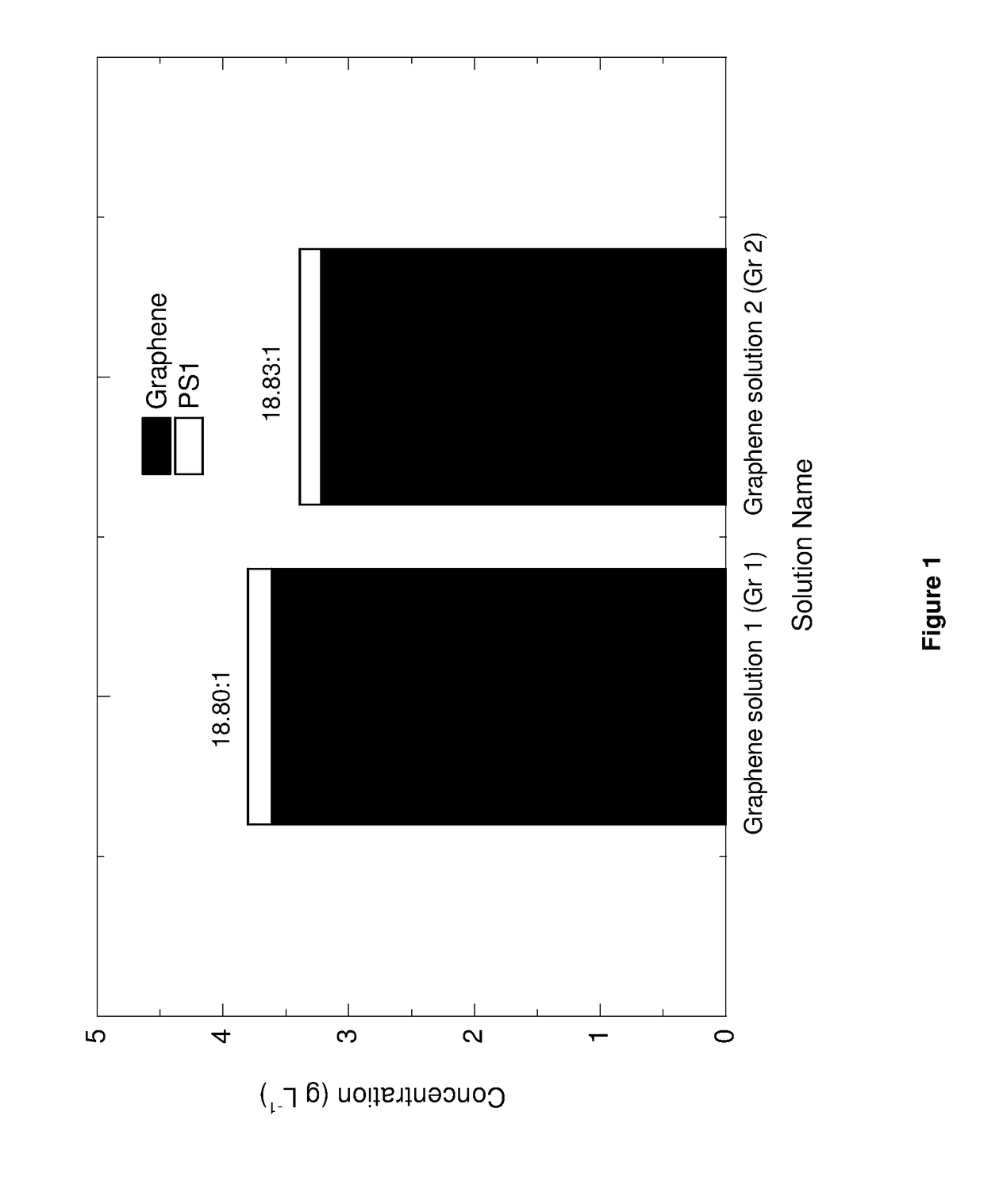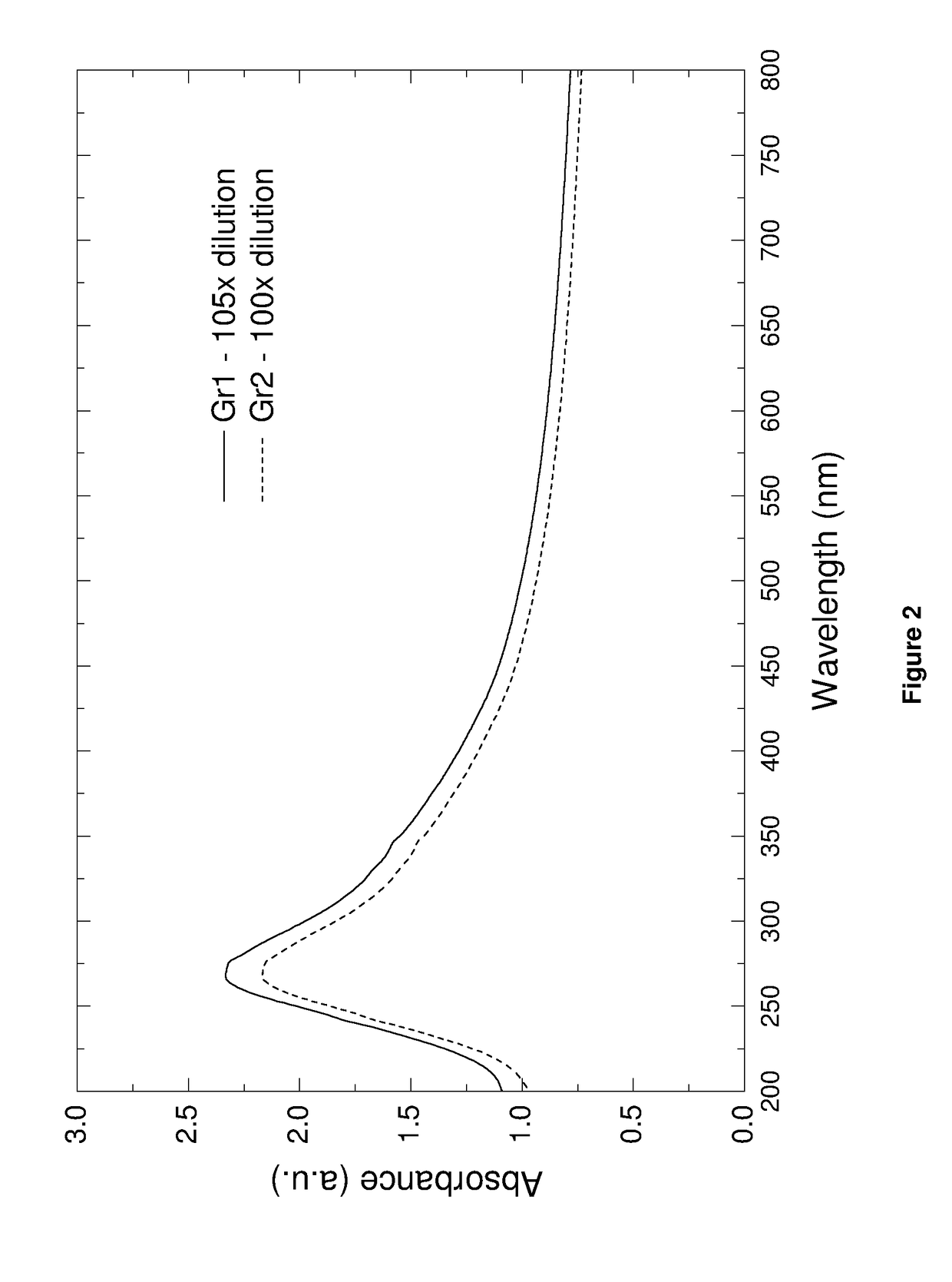Ink formulation
a technology of formulation and pigment, applied in the field of pigment formulation, can solve the problems of high boiling point, toxic, high cost, etc., and cannot be applied to the production of heterostructures on a large scale,
- Summary
- Abstract
- Description
- Claims
- Application Information
AI Technical Summary
Benefits of technology
Problems solved by technology
Method used
Image
Examples
example 1
Dispersions
[0259]The following quantities of reagents were added to a 12 mL glass vial:[0260]H2O—9.0 g;[0261]Propylene glycol—1.0 g;[0262]Triton-x100—0.6 mg;[0263]Graphite (flakes>100 μm)—30 mg; and[0264]1-pyrenesulfonic acid sodium salt (PS1)—10 mg.
[0265]The inkjet formulation was prepared using the quantities of reagents detailed above, by means of the following steps:[0266]1) The glass vial was stoppered and placed into a 600 W bath sonicator for 48 hours.[0267]2) The solution was then centrifuged at 3500 rpm (903 g) for 20 mins and the top ⅔ collected.[0268]3) The collected solution was then centrifuged at 15000 rpm (16602 g) for 20 mins and the supernatant collected and combined before UV-Vis was conducted using a Cary 5000 UV-Vis-Near IR spectrometer to determine the concentration of PS1 in the supernatant.[0269]4) The sediment was gently re-dispersed via shaking in a solvent comprising of H2O (90% by weight), propylene glycol (10% by weight) and Triton-x100 (6×10−3% by weight...
example 2
ersions
[0301]The following quantities of reagents were added to a glass vial:[0302]H2O—9.0 g;[0303]Propylene glycol—1.0 g;[0304]Triton-x100—0.6 mg;[0305]h-BN powder (˜1 μm)—30 mg[0306]1-pyrenesulfonic acid sodium salt—10 mg.
[0307]The inkjet formulation was prepared using the quantities of reagents detailed above, by means of the following steps:
1) The glass vial was then stoppered and placed into a 600 W bath sonicator for 48 hours.
2) The solution was then centrifuged at 3500 rpm (903 g) for 20 mins and the top ⅔ collected.
3) The collected solution was then centrifuged at 15000 rpm (16602 g) for 20 mins and the supernatant collected and combined before UV-Vis was conducted using a Cary 5000 UV-Vis-Near IR spectrometer to determine the concentration of PS1 in the supernatant.
4) The sediment was gently re-dispersed via shaking in a solvent comprising of H2O (90% by weight), propylene glycol (10% by weight) and Triton-x100 (6×10−% by weight).
5) Steps 3) and 4) were repeated until less ...
example 4
n-Plane Photodetector
[0329]A MoS2 ink with concentration of 0.6 mg / mL was formulated using the method described in Example 3. The UV-Vis spectra of the MoS2 ink before and after PS1 removal are shown in FIG. 28.
[0330]The MoS2 ink was printed onto PEL paper using a Dimatix DMP-2800 inkjet printer to form a rectangle of dimensions 1×1.25 mm with 25 μm drop spacing and 30 print passes.
[0331]A graphene ink with concentration of 0.6 mg / mL was made using the method described in Example 1 and used to print ‘comb like’ electrodes (FIG. 29) over the MoS2 rectangle using 40 print passes and 25 μm drop spacing.
[0332]The resulting device was imaged using an optical microscope and found to have a small electrode spacing<50 μm. (FIG. 38)
[0333]The two graphene electrodes were connected to a Keithley 2400 Sourcemeter and a bias voltage of 60V placed across the device.
[0334]A laser with λ=514.5 nm and power density=0.2 mW / μm2 was used to illuminate the device.
[0335]A photocurrent map of the highligh...
PUM
| Property | Measurement | Unit |
|---|---|---|
| surface tension | aaaaa | aaaaa |
| surface tension | aaaaa | aaaaa |
| width | aaaaa | aaaaa |
Abstract
Description
Claims
Application Information
 Login to View More
Login to View More - R&D
- Intellectual Property
- Life Sciences
- Materials
- Tech Scout
- Unparalleled Data Quality
- Higher Quality Content
- 60% Fewer Hallucinations
Browse by: Latest US Patents, China's latest patents, Technical Efficacy Thesaurus, Application Domain, Technology Topic, Popular Technical Reports.
© 2025 PatSnap. All rights reserved.Legal|Privacy policy|Modern Slavery Act Transparency Statement|Sitemap|About US| Contact US: help@patsnap.com



